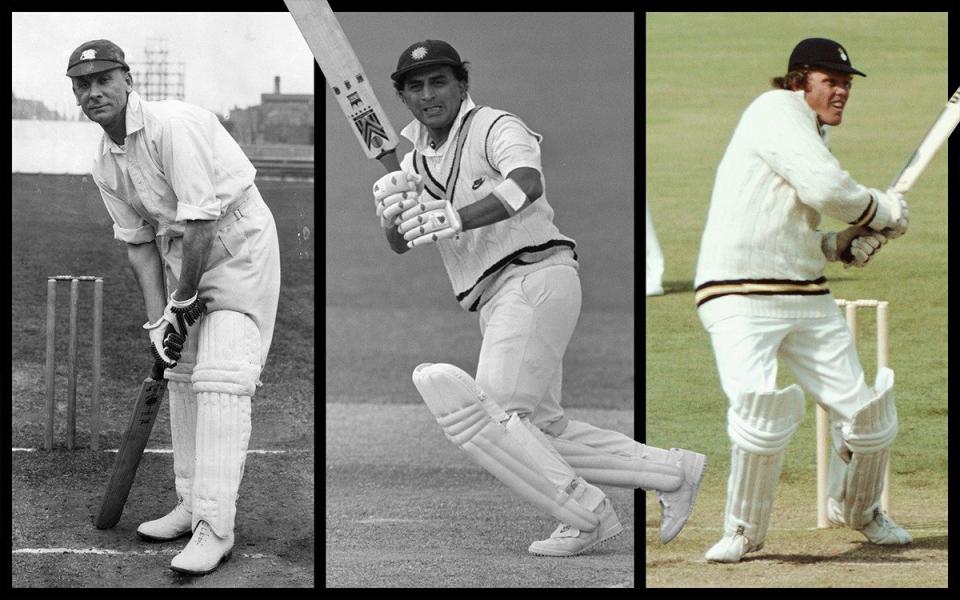
The shortlist for our all-time World Test XI has been picked by Scyld Berry, our chief cricket writer. Now we are asking you, the readers, to pick the players who should make the final team. We have divided our nominees into six categories:
-
Openers (pick two below)
-
Middle-order batsmen (voting on Tuesday)
-
All-rounders (voting on Wednesday)
-
Wicketkeepers (voting on Wednesday)
-
Spinners (voting on Thursday)
-
Seamers (voting on Thursday)
Think we’ve missed an obvious candidate? Let us know in the comments. Want to justify your selections? Likewise, let us know.
Voting starts today with the openers. Come back on Tuesday to vote for the middle-order batsmen. Then on Wednesday help pick the all-rounder and wicket-keeper and return on Thursday for the vote on the seamers and spinner. The readers’ team, alongside Scyld Berry’s preferred XI) will be announced on Friday.
Opening batsmen
Victor Trumper (Australia)
Debut: 1899. 48 matches; 3,163 runs @ 39.04 (eight hundreds)
He opened the batting in only 32 of his 48 Tests, and averaged no more than 33 in them (his highest innings came at number five or six), but the effect which his dazzling strokeplay had on opponents must never be underestimated. Running down the pitch does tend to demoralise any bowler; and his strike-rate of 68 per 100 balls was far ahead of his time.
The most vivid illustration came in the Old Trafford Test of 1902 on a wet pitch, when Trumper strode out and hit 104 in 115 minutes: the first century in a Test before lunch on day one, and one of only six examples ever.
Yet for all his forays down the pitch – captured forever by Beldham’s photograph of Trumper charging at the Oval – he was stumped once in 80 Test dismissals. Factor in too that he got scarlet fever halfway through his Test career which tired him thereafter; and the admiration of all his contemporaries.
When he died aged 39, Sporting Life spoke for many with this tribute: “No other batsman has played cricket with greater grace and more attractiveness. Even his shorter innings were masterpieces of artistic cricket.”
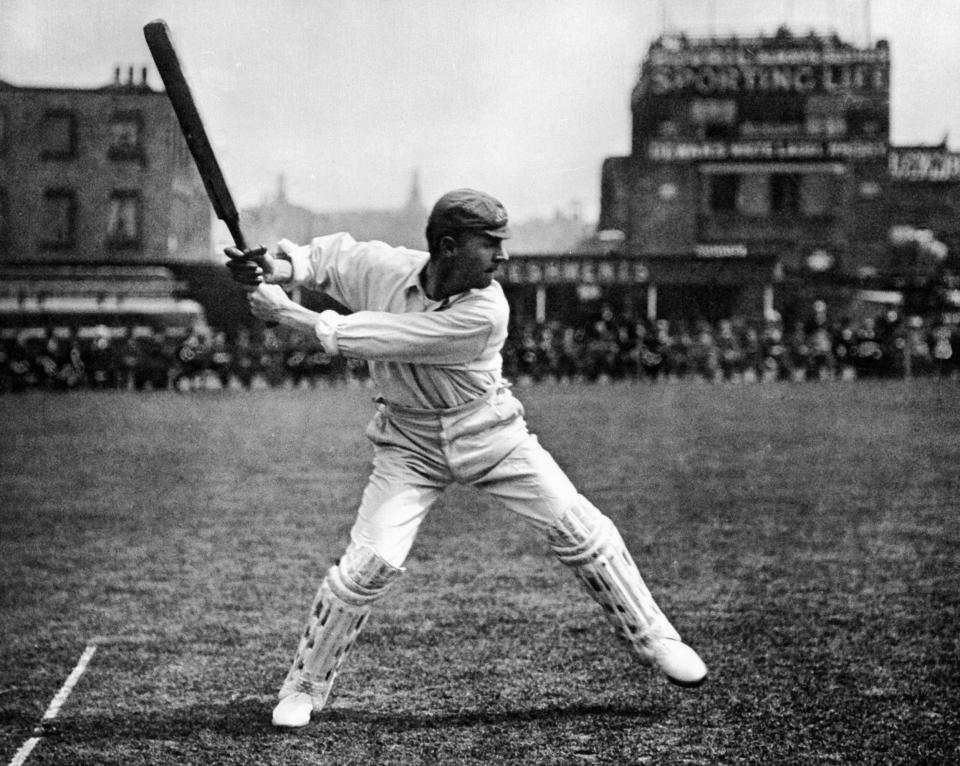
Sir Jack Hobbs (England)
Debut: 1908. 61 matches; 5,410 runs @ 56.94 (15 hundreds)
If you want an opener who is at home on all pitches – and if this all-time XI is playing Mars away, it could be a very dusty turner – then look no further.
Remember that Hobbs began in the era of chivalry, when it was “not done” to hog the crease and score huge hundreds i.e. pre-Bradman; and it is amazing that he should have averaged 56 in Test cricket, and 58 at batting at one, as he usually was. Only once did he get greedy and go on to 200, against South Africa in 1924, and then he did not bat very long: he hit the sixth ever hundred before lunch in a Test (on any day).
What is still unique about Hobbs, apart from the speed of his footwork and his deftness of placement, and his running between wickets (he was a “gun fielder” at cover too), was his consistently excellent record against Australia: 12 centuries against them, nine of them in Australia, in only 41 Tests. To this day nobody has scored so many.
Herbert Sutcliffe (England)
Debut: 1924. 54 matches; 4,555 runs @ 60.73 (16 hundreds)
Opening batsmen face a unique problem: they never know for sure what is about to hit them, unlike team-mates down the order. Temperament, therefore, is key. And Sutcliffe’s greatest quality was equanimity.
We should imagine a right-handed version of Sir Alastair Cook: dark-haired, hirsute, overtly imperturbable, which served to soothe his partner Hobbs. Sutcliffe opened the batting for England from 1924 to 1935, which was the highest-scoring era of Test cricket: batsmen could not be LBW to balls pitching outside offstump, and they could take as much time as they wanted in Australia where Tests were played to a finish.
Yet Sutcliffe proved he was no flat-track bully by scoring two of the finest-ever Ashes hundreds for England on pitches which had been rained on, old-fashioned “sticky wickets”. His 161 at the Oval in 1926 brought the Ashes home, and his 135 at Melbourne in 1928-9, off 462 balls, retained them. Great numbers even for this period: a Test average of 60, rising to 63 in Australia, and 66 against Australia overall.
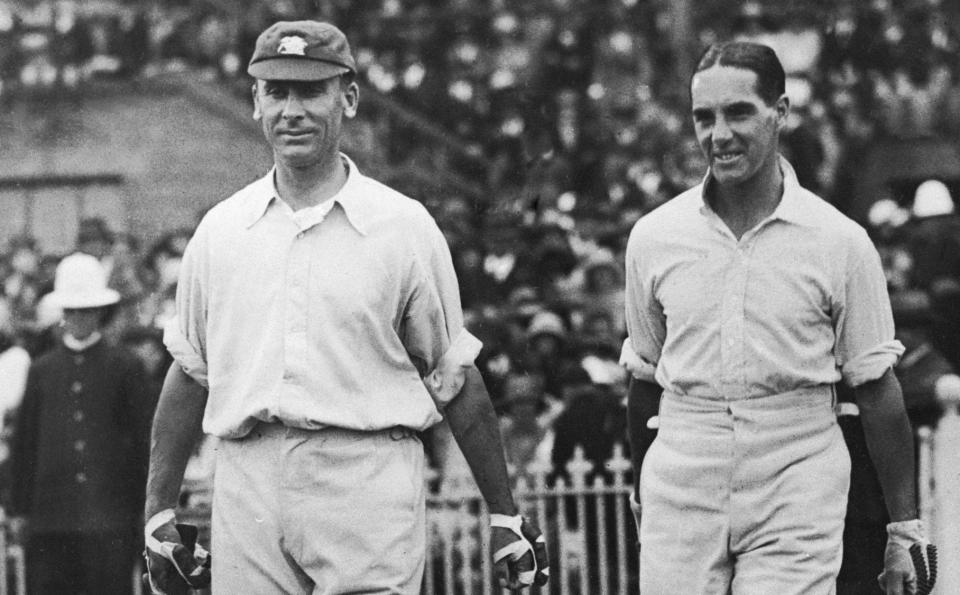
Sir Leonard Hutton (England)
Debut: 1937. 79 matches; 6,971 runs @ 56.67 (19 hundreds)
An aggregate of 1,345 runs, at an average of 67, in your first 13 Tests: even Harry Brook will have to go some to beat that start. This was Hutton’s record as an opening batsman for England – bolstered of course by his 364 against Australia in the Oval Test of 1938 – before the Second World War halted his career, aged 23. So he lost the six seasons of what would have been his prime; more than that, he lost some of his left arm, and flexibility, after he had an accident while training in a gym and the surgery resulted in the arm being shortened.
Pulling, which requires both arms to be extended, became much harder – and Hutton had to face Ray Lindwall and Keith Miller, on and off, for the rest of his career. He still averaged 56 overall, and played many a match-winning or face-saving innings, but not with the fluency of youth.
If a captain is required, of the canny and defensive rather than Stokesian kind, he would be up for it – in his taciturn, enigmatic, even Delphic, but deeply caring way.
Barry Richards (South Africa)
Debut: 1970. Four matches; 508 runs @ 72.57 (two hundreds)
He scored more than 28,000 runs, and 80 centuries, at first-class level at an average of 54, so it is likely he would have flourished at Test level, but he only had time for four Tests before apartheid South Africa was banned from 1970.
It is fair to say he made the most of them. The Australians were fairly tired when they arrived straight after a Test series in India but still, Graham McKenzie, Alan Connolly and John Gleeson were no bad attack: and Richards, in his second Test, hit 140 off only 164 balls, reaching three figures in the first over after lunch; and scored 505 runs in the four-Test series at a strike-rate of 59 and an average of 72.
How would he have fared against the West Indies fast bowlers in the 1980s, or against spinners in India and Pakistan? We will never know. He kept on taking domestic attacks apart, for Hampshire and South Australia, hitting 325 in a single day against Western Australia in Perth and 356 in all.
But the only other cricket he played at international level was in 1970 for the Rest of the World against England, captained by Ray Illingworth. He had a quiet series – highest score 64 – and was bowled four times in his seven dismissals.
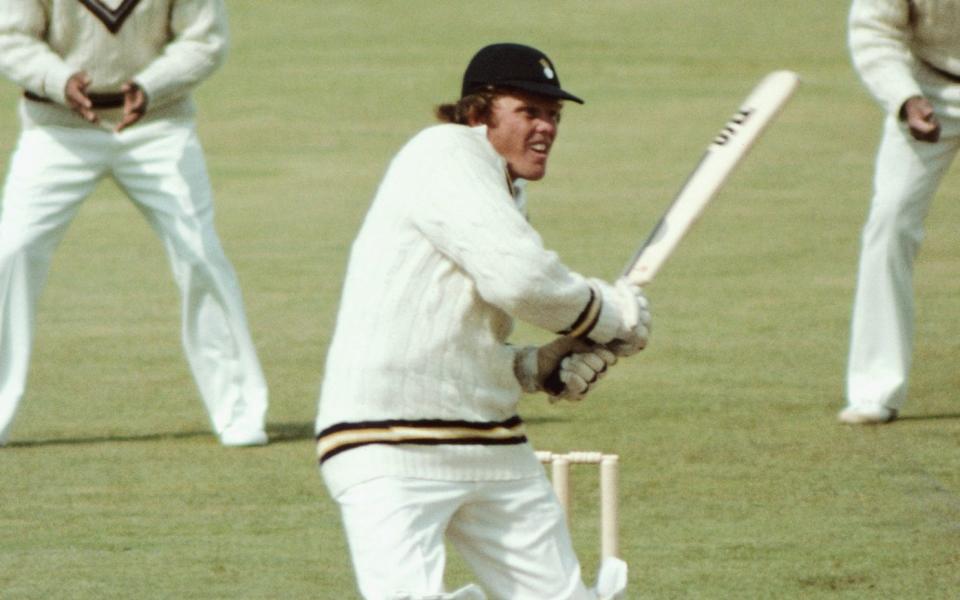
Sunil Gavaskar (India)
Debut: 1971. 125 matches; 10,122 runs @ 51.12 (34 hundreds)
No batsman can have come closer to incarnating the coaching manual – as it was before white-ball hitting – than Gavaskar. The Bombay school of batting, from which he sprung, was as orthodox as the West Riding school which produced Len Hutton and Joe Root.
Superb on the front foot, left elbow leading, Gavaskar announced himself on India’s tour of the West Indies by scoring more runs in his debut series, 774, than anybody has ever done – and he was dismissed only five times.
Such was his insatiable appetite and concentration, he was only the second batsman to score a century and a double-century in the same Test. One caveat: West Indies’ great fast bowlers had yet to appear, and Gavaskar did not double that aggregate in his remaining 16 innings against them.
Nevertheless he set a new world Test record for most runs, 10122, by overtaking Sir Geoffrey Boycott; and his strokeplay and balance at the crease were perfect models.
Matthew Hayden (Australia)
Debut: 1994. 103 matches; 8,625 runs @ 50.73 (30 hundreds)
Suppose the opponents in this fixture came from another planet or galaxy and are bigger in physical size. Send for “Haydos”. Very few – Sir Vivian Richards? Sir Clyde Walcott? – have had such a massive presence at the crease, which is a priceless commodity when setting a side’s tone for a series.
As soon as Hayden puffed out his chest in Brisbane and walked down the pitch at the pace bowlers, the Ashes were over, England were gone. It was not only the quicks that this left-hander intimidated. His sweep in all its power-packed forms enabled Australia to win in Asia for the first time on a regular basis: he averaged over 50 in India, on several raging turners. Oh, and he briefly held the record for the highest Test innings, 380 in Perth, even if it was only against Zimbabwe.
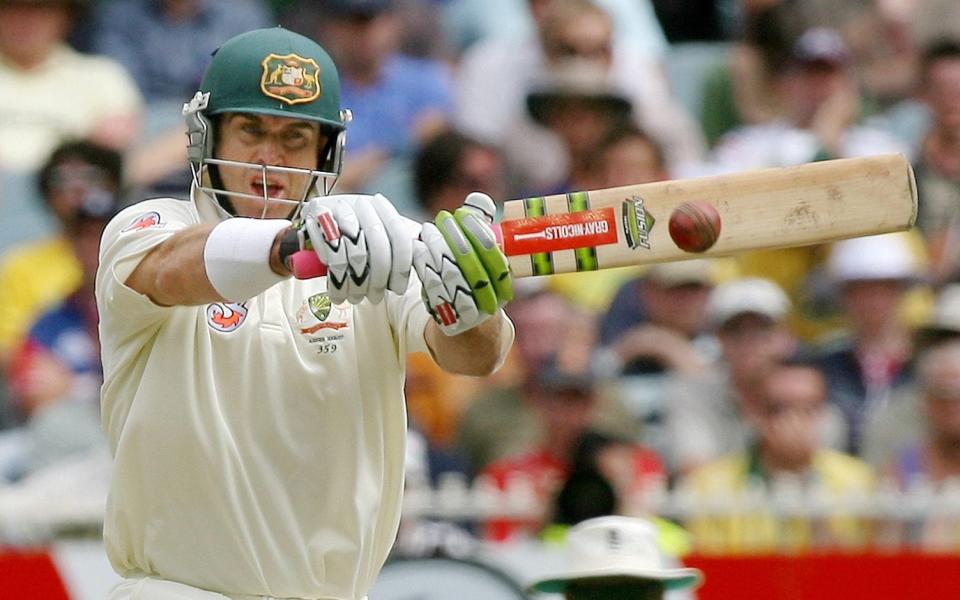
Virender Sehwag (India)
Debut: 2001. 104 matches; 8,586 runs @ 49.34 (23 hundreds)
Opening the batting after South Africa had piled up the runs in Chennai, he scored 319 off only 304 balls, with 42 fours and five sixes, against Dale Steyn, Makhaya Ntini, Morne Morkel and Jacques Kallis. He hit 309 off 375 balls in Multan against Pakistan’s Shoaib Akhtar and Saqlain Mushtaq; 293 off 254 at the Brabourne against Sri Lanka’s Muttiah Muralitharan; and 254 off 247 against Pakistan in Lahore.
No opening batsman in the history of cricket, not even in this age of “Baz-ball”, has achieved such brilliance over the course of long innings. Sehwag could stand there against pace and, such were his wrists, hit the ball where he liked, while against spin he had the quickest of feet as well as hands.
To this day no Test opener who has scored 1,000 runs has done so at a faster rate than 82 runs per 100 balls as Sehwag did. The lacuna in his record is that he did not fare well when the new ball jagged around, but there is a good chance this fixture will not be staged in England, New Zealand or South Africa. He could also bowl a big-turning offbreak when he had a mind.
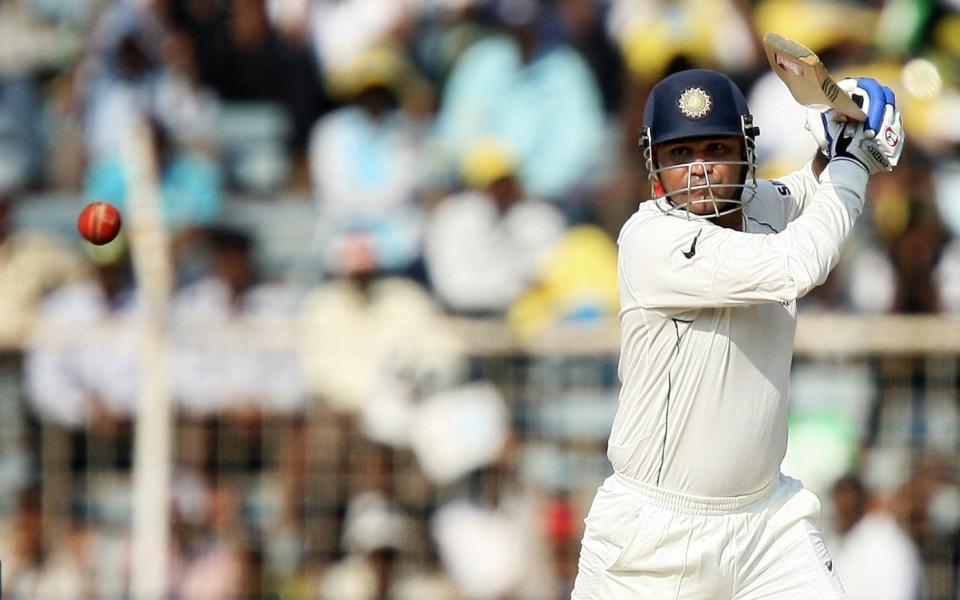
Graeme Smith (South Africa)
Debut: 2002. 117 matches; 9,265 runs @ 48.25 (27 hundreds)
Two tall lefthanded batsmen bestrode the world stage in the early part of the 21st century as opener, first slip and captain – and the impartial observer would probably argue that Graeme Smith shaded Alastair Cook on each front in their 12-year Test careers, with the proviso that Cook demonstrated greater longevity by playing more Tests.
For all the quirkiness of his technique, with a strong bottom hand shovelling to leg and square-cutting, Smith scored more Test runs than any other opener bar Cook and Sunil Gavaskar. His tenacity broke three England captains, and enabled him to score four Test centuries in successful run-chases, the most.
He also grabbed 169 catches in his 117 Tests; and, incredibly, he was captain in 109 of them, winning 53, losing 29, and took South Africa to No 1 in the world Test rankings in 2012. No other captain has ever won 50 Tests. And everything was achieved against a complicated political background that nobody else has had to deal with.
Not the most imaginative captain, because all he had to do was man-manage and fire away with his world-class pace attack, but still a strong candidate to lead this XI.
Sir Alastair Cook (England)
Debut: 2007. 161 matches; 12,472 runs @ 45.35 (33 hundreds)
Calmness under pressure will be the supreme quality required in the World XI’s opening batsmen if the opposition turns out to be a team of extra-terrestrial cricketers spilling out of their spaceship on to the outfield shortly before the start. And Cook would be the last to turn a hair.
He grew up performing in public as a choirboy, even in St Paul’s Cathedral, so he was always at home on a big stage, even when he swapped song-sheet for team-sheet.
From the moment he flew into Nagpur and phlegmatically made a hundred on his Test debut, aged 20, he was at home, and was never dropped.
Wasting the minimal amount of nervous energy enabled Cook to last longer than any other opener (36 more Tests than Sunil Gavaskar’s 125): his durability, of its kind, was unique. And if he gets going against the extra-terrestrial attack, we can be sure he will never give his wicket away – such is his fitness, stamina and stubbornness – and will grind them into the universe’s dust.
Vote for the opening batsmen (select two names)
Come back on Tuesday to vote for the middle order. Then on Wednesday pick the all-rounders and wicket-keeper, and on Thursday select the seamers and spinner. Voting in all polls closes at 5pm on Thursday.
Article courtesy of
Source link